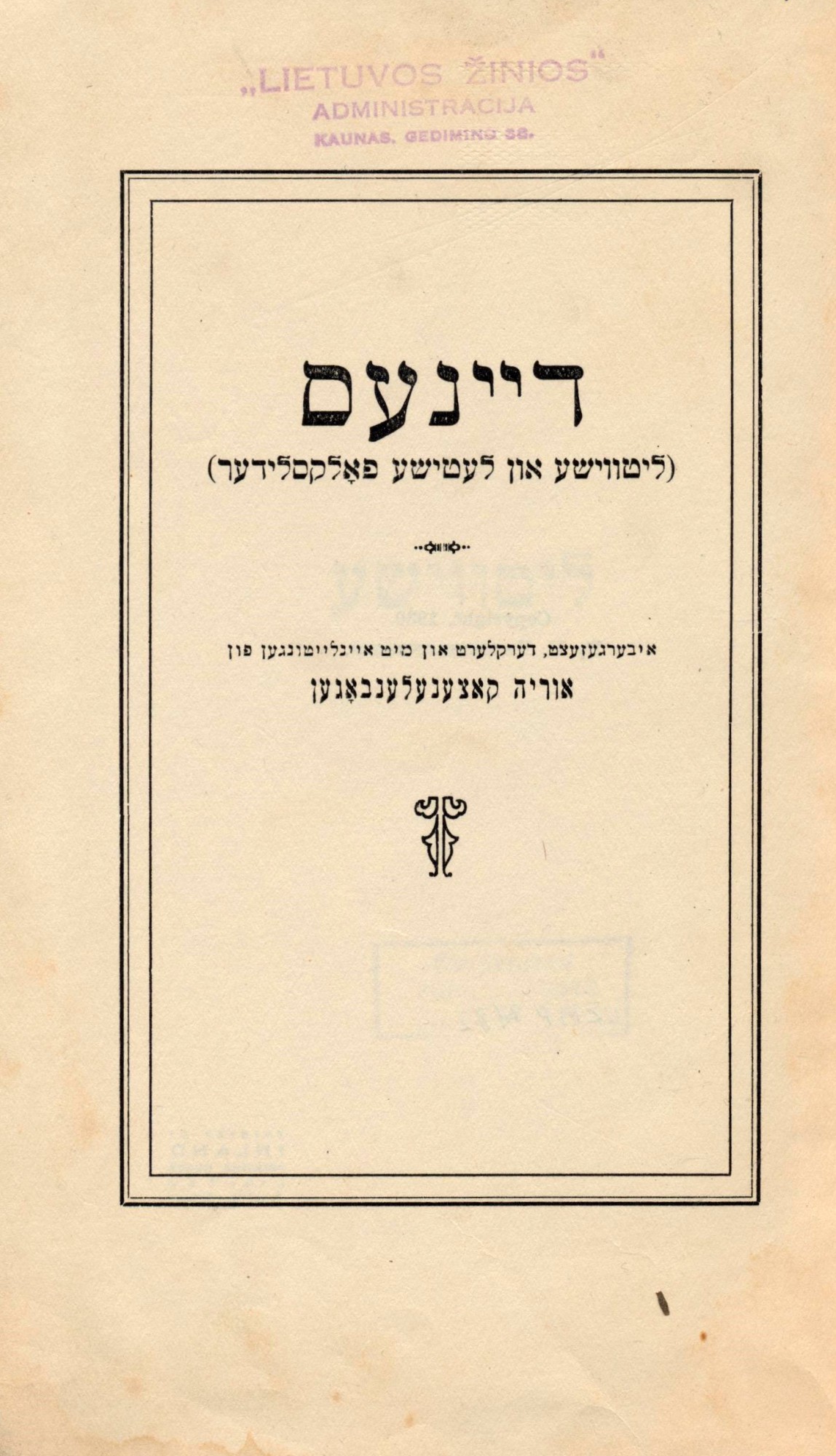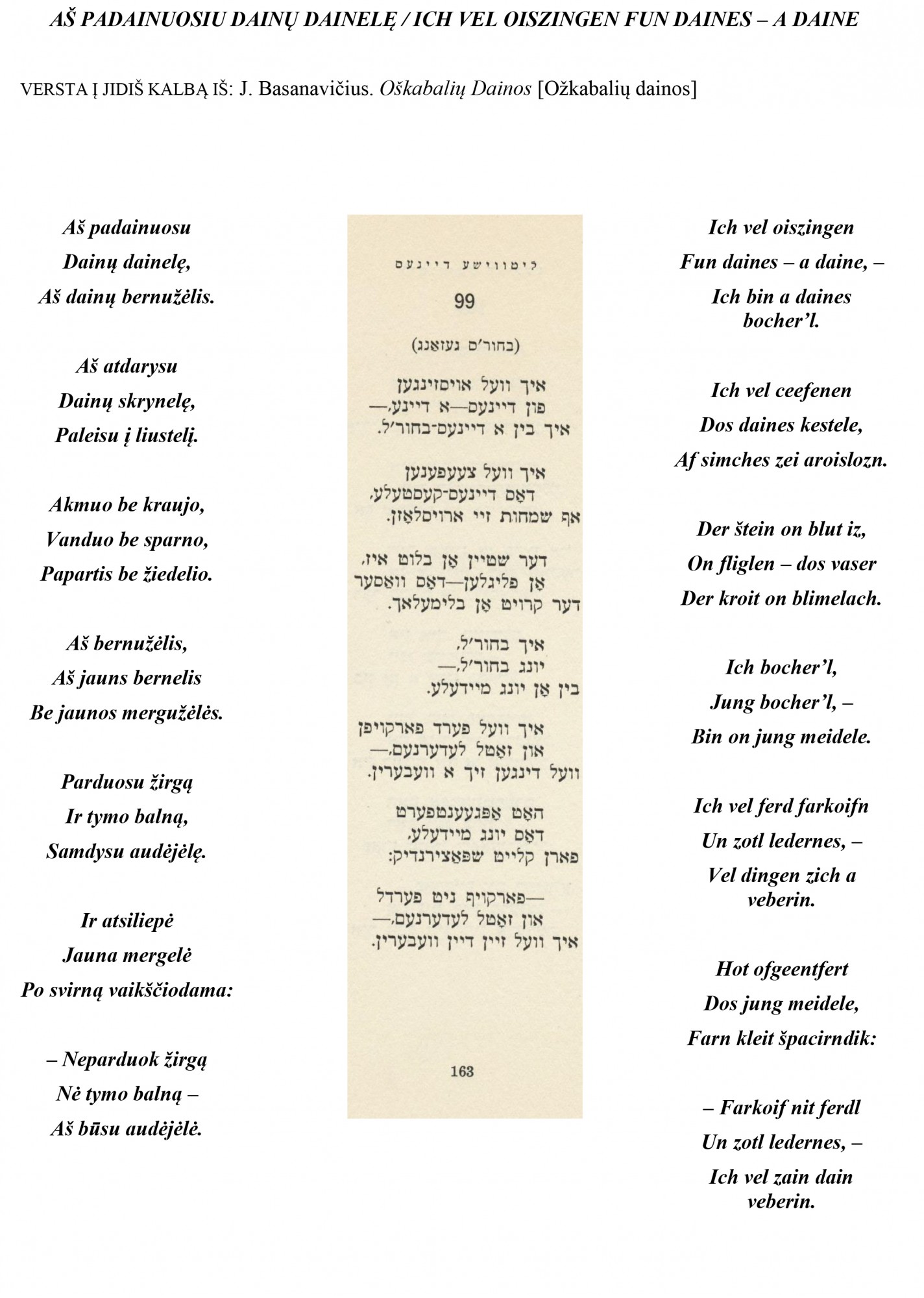EXHIBIT OF THE MONTH |
← |
Published: 2018-04-30

Book "Daines: Litviše un Letiše folkslider" (Songs: Lithuanian and Latvian Folk Songs) in Yiddish, compiled and translated by Urija Kacenelnbogen, Toronto: Inland Printing House Limited, 427 p.; VŽMP 482
The Museum’s holdings include a book in Yiddish published in 1930 in Toronto and titled Daines: Litviše un Letiše folkslider (Songs: Lithuanian and Latvian Folk Songs) as complied and translated into Yiddish, commented and prepared for printing by Urija Kacenelenbogen.

Urija Kacenelenbogen (1885–1980) was a Vilnius-born Jewish writer, publicist, translator, public activist and active promoter of cultural co-existence and close ties between Lithuanian Jews and other nations. In 1904, he published a play Kraft un libe (Power and Love) which became one of the first works of modern Yiddish literature in Vilnius. In 1914, Kacenelenbogen edited the weekly Naš kraj (Our Region) and in 1914–1922 published the Jewish cultural almanac Lite. In 1927, he emigrated for the USA where he taught at various Jewish schools in North America and translated literary texts and publications into Lithuanian, Belarussian and Latvian. Daines – unique compilation of Baltic folklore – was one of his biggest and most significant works. Kacenelenbogen starts his compilation with a foreword where he speaks about the specific nature, themes and peculiarities of Lithuanian and Latvian folk songs, including the translation issues that he encountered along the way and solutions to them. In the compilation the author presents the translation of around 600 Lithuanian and Latvian folk songs (calendar, historical, war, love, family, children, wailing, work, polyphonic, humoristic, wedding songs) into Yiddish, including music sheets of five Lithuanian and five Latvian folk songs. Kacenelenbogen finishes his compilation with a list of reference sources that he used to find the songs that were translated into Yiddish and presents an exhaustive bibliography of Baltic folklore.
Prepared by Jovita Stundžiaitė-Olšauskienė, Conservationist and Researcher of Auxiliary Holdings at VGSJM
© From the holdings of VGSJM
| ↑ | ← |
